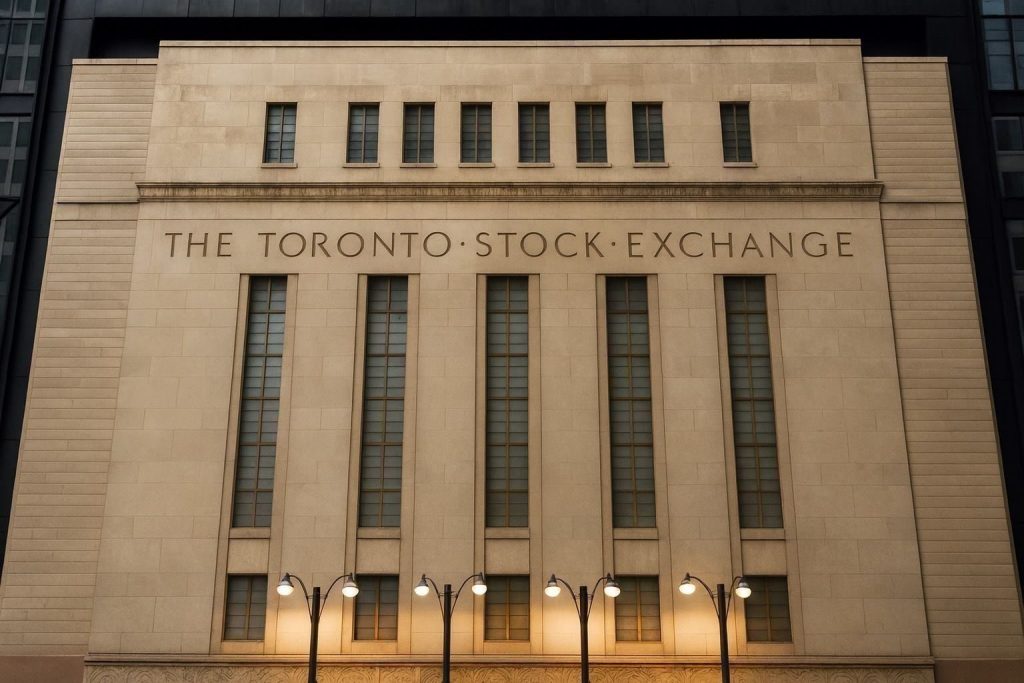The UK stock market ended Friday in positive territory, with the FTSE 100 edging higher as upbeat corporate news and broker upgrades helped investors look past lingering worries about a tax‑heavy Autumn Budget, weak manufacturing data and a rare global futures trading outage.
By the close on 28 November 2025, the FTSE 100 finished around 9,737, up roughly 0.45% on the day, near the top of its trading range and leaving the blue‑chip index still close to record territory. [1] The broader FTSE All‑Share also gained, while the FTSE 250 and AIM 100 posted more modest advances, helped by a powerful rally in pub and restaurant group Mitchells & Butlers. [2]
At the same time, Friday’s bounce was not enough to prevent the FTSE 100 from heading for its first monthly decline in five months, even after a strong run earlier in November on hopes of interest‑rate cuts and a largely market‑friendly UK Budget. [3]
UK stock market today: key numbers at the close
- FTSE 100: ~9,737, up about 0.45% on the day
- FTSE 250: around 22,100–22,150, up roughly 0.1–0.2% [4]
- FTSE All‑Share: near 5,230, up about 0.3% [5]
- FTSE Small Cap: up around 0.3% [6]
- FTSE AIM 100: outperformed with a gain of roughly 0.7% [7]
Turnover was lighter than earlier in the week, with traders citing a shortened U.S. Black Friday session and some lingering caution after a major outage at CME Group temporarily halted trading in key global futures contracts overnight. [8]
Year to date, UK equities remain in solid shape. The FTSE 100 has delivered close to a high‑teens percentage gain in 2025, with an average dividend yield just above 3%, while the more domestically focused FTSE 250 is up mid‑single digits plus income, according to data collated from market providers referenced by UK commentators. TechStock²+1
Mitchells & Butlers steals the show in the FTSE 250
The standout story of the day came from the FTSE 250, where Mitchells & Butlers – owner of Toby Carvery, Harvester and All Bar One – jumped roughly 8–11%, topping the mid‑cap leaderboard after unveiling a strong set of full‑year results. [9]
For the 52 weeks to 27 September 2025, the group reported: [10]
- Like‑for‑like sales up 4.3%, with both food and drink revenues growing
- Total revenue rising to £2.71bn (from £2.61bn a year earlier)
- Adjusted operating profit up 5.8% to £330m, lifting margins to 12.2% from 12.0%
- Profit before tax increasing to £238m (from £199m)
- Net debt (excluding leases) reduced by £146m to £843m, strengthening the balance sheet
Management also flagged a solid start to the new financial year, with like‑for‑like sales up 3.8% in the first eight weeks of FY2026, suggesting momentum has carried into the new year despite ongoing cost pressures. [11]
Analysts praised the update, arguing that the company’s “Ignite” efficiency programme and estate quality left it well placed to absorb an expected £100m+ in additional cost headwinds this year – including higher wages, national insurance and the impact of the latest UK Budget on business rates – while still growing profits. [12]
The rally in Mitchells & Butlers fed into a broader narrative that, despite a sustained cost‑of‑living squeeze, UK consumers are still prioritising relatively affordable out‑of‑home leisure, supporting certain hospitality names even as others struggle. TechStock²+1
FTSE 100 today: energy, miners and industrials support gains
On the FTSE 100, the advance was driven by a mix of energy stocks, miners and industrial names, helped by firmer commodity prices and a flurry of broker upgrades. [13]
According to London market data:
- Energy shares gained as Brent crude prices ticked higher ahead of a key OPEC+ meeting and amid uncertainty over Russia‑Ukraine peace efforts. Heavyweights BP and Shell added to the index’s gains. [14]
- Precious‑metal miners such as Fresnillo were among the top risers, benefiting from gold trading near record highs around $4,200 an ounce, as investors sought hedges amid geopolitical tensions and shifting rate expectations. [15]
- Copper‑exposed Antofagasta also traded higher, supported by resilient industrial‑metal prices. [16]
In industrials, Johnson Matthey – the speciality chemicals and clean‑tech group – climbed after J.P. Morgan upgraded the stock to “overweight” from “neutral,” highlighting its exposure to energy‑transition themes and battery materials. [17]
Travel and leisure names also found buyers. easyJet rose after a broker upgrade to “outperform,” with analysts pointing to strong performance in the carrier’s holidays division and easing capacity growth in the wider sector. [18]
Whitbread and Burberry drag on blue‑chips
Offsetting some of the strength elsewhere, a handful of household names weighed on the FTSE 100.
Whitbread slumps on double downgrade and Budget hit
The biggest faller on the day was Whitbread, owner of Premier Inn, whose shares at one stage sank nearly 9–10% before recovering some ground to remain more than 5% lower by lunchtime. [19]
Analysts at Bernstein issued a double downgrade, cutting the stock from “outperform” to “underperform” and slashing their price target, citing rising cost pressures, softer UK consumer spending and heightened uncertainty over returns from the group’s German expansion. [20]
Fresh analysis of the Autumn Budget also hurt sentiment. Whitbread warned that changes to property taxes and business rates could add £40–50m to annual costs by 2027, squeezing margins just as the group is managing wage and energy inflation. [21]
Burberry under pressure amid China worries
Luxury fashion house Burberry remained under pressure, slipping a further couple of percent after J.P. Morgan downgraded the stock to “underweight,” even as it nudged its price target higher. [22]
The broker flagged ongoing demand concerns in China, a key market for the brand, where patchy economic data and a weaker luxury cycle have clouded the outlook for high‑end discretionary spending. TechStock²+1
Combined, the falls in Whitbread and Burberry helped explain why, despite the index rising overall, the aerospace & defence and consumer discretionary sectors lagged on the day and for much of November. [23]
Budget, sterling and rate‑cut hopes: the macro backdrop
Friday’s trading took place against the backdrop of Chancellor Rachel Reeves’s Autumn Budget, delivered earlier in the week and now being digested by markets, businesses and think‑tanks.
Key features of the Budget include: [24]
- Around £26bn a year in extra tax rises, pushing the UK tax burden to its highest level since the Second World War
- A “spend‑now, tax‑later” profile, with roughly 85% of the fiscal consolidation back‑loaded towards the end of the forecast period, according to Columbia Threadneedle’s analysis
- Extended freezes on income‑tax thresholds and new property‑related levies, which the Institute for Fiscal Studies has warned could hit many middle‑income households and public services later in the decade
- Increased welfare spending and changes to savings rules, including a planned cut to the tax‑free allowance for cash ISAs from 2027, designed in part to push more savings into productive investments such as equities [25]
Despite the tax shock, markets have so far reacted relatively calmly. Sterling is on track for its best week in more than three months, up around 0.8–0.9% against the dollar, as investors welcomed what they saw as a broadly disciplined approach to borrowing, even if the politics are contentious. [26]
On Budget day, 10‑year gilt yields fell around 7 basis points to roughly 4.4%, the biggest drop on a Budget day in nearly two decades, reflecting relief that there were no nasty surprises and some optimism that the government has secured extra “headroom” under its fiscal rules. [27]
For the Bank of England, the picture remains finely balanced:
- Headline CPI eased to 3.6% in October from 3.8% in September; core inflation slipped to 3.4%, still well above the 2% target but moving in the right direction
- Money markets now price a strong probability of a BoE rate cut in December, after the Bank narrowly held rates in a 5–4 split vote earlier this month TechStock²+1
BoE policymakers have, however, cautioned that some Budget measures – notably temporary energy‑bill support – may only deliver a one‑off fall in inflation, which the Bank could “look through” when setting policy. TechStock²
Data watch: car production slump, housing jitters and business confidence
Beyond the Budget, a run of new data on Friday highlighted the fragile state of parts of the UK real economy, even as the stock market holds near record highs.
Car production hit by cyberattack fallout
Figures from the Society of Motor Manufacturers and Traders (SMMT) showed that UK car production in October plunged 23.8% year‑on‑year to about 59,000 units, the weakest October reading since the early 1950s. TechStock²
The main culprit was the major cyberattack on Jaguar Land Rover earlier in the autumn, which forced the UK’s largest carmaker to halt production for several weeks and created knock‑on disruption across its supply chain. Including vans and other commercial vehicles, total UK vehicle output dropped nearly 31% in the month. TechStock²
There was one bright spot: production of electric and hybrid vehicles rose by more than 10%, meaning almost half of all cars built in October were electrified models, underscoring the structural shift towards cleaner transport. TechStock²
Housing and business sentiment under pressure
In the housing market, new data suggested that activity slowed in the run‑up to the Budget: UK home sales fell around 4% in the four weeks to 23 November, with buyer demand down double digits year‑on‑year as households paused decisions amid speculation about property‑tax changes. TechStock²+1
Average UK house prices are still up about 1–1.5% over the past year to around £270,000, but London and the South of England have seen their first price declines in roughly 18 months, hit hardest by talk of a “mansion tax” and higher levies on expensive properties, according to industry and media reports. TechStock²+2City AM+2
Separately, Lloyds Bank’s Business Barometer showed overall business confidence falling eight points to 42 in November – still comfortably above its long‑run average of 30, but a reminder that firms remain cautious heading into 2026. Encouragingly, more than half of surveyed companies still plan to increase headcount over the next 12 months, and price‑rise expectations have dropped to their lowest level since January. TechStock²
Taken together, the data point to an economy that is slowing but not stalling – a backdrop that helps explain why domestically focused mid‑caps have lagged the export‑heavy FTSE 100, but are still delivering respectable returns in 2025. TechStock²+1
Global factors: CME outage and Fed‑cut bets
Internationally, markets on Friday were preoccupied by two themes: a rare technical failure at the world’s largest derivatives exchange and growing expectations of a U.S. Federal Reserve rate cut next month.
Overnight, CME Group suffered one of its longest outages in years after a cooling failure at a key data centre in Chicago. Trading in major futures contracts – including those linked to U.S. equity indices, Treasuries, FX and commodities such as WTI crude and gold – was halted for roughly 11 hours before gradually resuming by early U.S. trading. [28]
European brokerages reported temporary disruption in some futures products, but cash trading on the London Stock Exchange continued as normal, albeit with thinner volumes than earlier in the week. [29]
Meanwhile, global equity sentiment has been buoyed by rising expectations that the Fed will cut rates in December, with futures implying a probability of around 80–85%. Asian shares ended a difficult November on firmer ground, while European stocks are on track for their fifth consecutive month of gains, even as technology names lag. [30]
For UK investors, the combination of lower U.S. yields, a softer dollar and falling domestic inflation has underpinned equity valuations and helped sustain demand for high‑yielding UK blue‑chips, particularly in energy, financials and consumer staples. [31]
Valuations and outlook: are UK stocks still cheap?
Despite the FTSE 100’s strong run over the past year – with a 17–18% 12‑month gain and the index now trading close to all‑time highs – many strategists argue that UK equities remain undervalued relative to global peers, particularly once dividend yields are factored in. [32]
A recent piece in MoneyWeek, published today, contends that: [33]
- Around 75% of FTSE 100 revenues come from outside the UK, making the index more of a global earnings play than a pure bet on the domestic economy
- Mid‑ and small‑cap stocks, which have underperformed in recent years, have scope to recover lost ground if UK growth stabilises and domestic investors return to the equity market
- Persistent outflows from UK equity funds mean many UK savers are under‑exposed to shares, even as cash returns look set to fall as interest rates decline
On the other hand, think‑tanks such as the IFS and Resolution Foundation have warned that Reeves’s Budget leaves the UK facing rising national debt and the prospect of renewed austerity in public services towards the end of the decade, unless growth improves. [34]
For now, markets seem willing to give the government the benefit of the doubt. Gilt yields have eased, sterling is firmer, and the FTSE 100 remains one of the strongest‑performing major indices in 2025, even as November looks set to break its recent winning streak. [35]
What investors are watching next
Looking ahead into December and early 2026, UK and global investors will be focused on:
- The Bank of England’s December meeting and whether it delivers the widely expected first rate cut of the new easing cycle
- Further detail on how the Autumn Budget’s tax measures – particularly on property, savings and gambling – will affect corporate earnings across sectors such as hospitality, real estate, retailers and insurers [36]
- Progress in Russia‑Ukraine peace efforts and the upcoming OPEC+ gathering, which will influence energy prices and related UK stocks [37]
- Incoming data on inflation, wages, housing and business confidence, which will shape expectations for UK growth in 2026
For long‑term investors, today’s action underlines a familiar message: stock‑specific stories still matter. Mitchells & Butlers’ surge and Whitbread’s slide both show how quickly sentiment can shift when earnings, guidance and policy changes collide.
As always, this article is for information only and does not constitute investment advice. Investors should consider their own circumstances or seek professional guidance before making decisions.
References
1. markets.investorschronicle.co.uk, 2. www.hl.co.uk, 3. www.reuters.com, 4. www.hl.co.uk, 5. www.hl.co.uk, 6. www.hl.co.uk, 7. www.hl.co.uk, 8. www.ig.com, 9. www.reuters.com, 10. www.directorstalkinterviews.com, 11. www.directorstalkinterviews.com, 12. www.directorstalkinterviews.com, 13. www.reuters.com, 14. www.reuters.com, 15. www.standard.co.uk, 16. www.hl.co.uk, 17. www.reuters.com, 18. www.ig.com, 19. www.standard.co.uk, 20. www.investments.halifax.co.uk, 21. www.hl.co.uk, 22. www.reuters.com, 23. www.reuters.com, 24. www.reuters.com, 25. www.reuters.com, 26. www.reuters.com, 27. www.columbiathreadneedle.com, 28. www.reuters.com, 29. www.reuters.com, 30. www.reuters.com, 31. www.reuters.com, 32. markets.ft.com, 33. moneyweek.com, 34. www.ft.com, 35. www.reuters.com, 36. www.theguardian.com, 37. www.reuters.com










